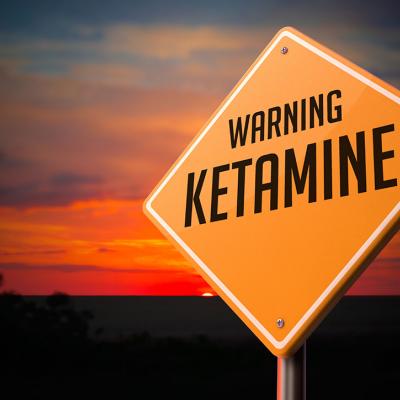Introduction
In recent years, researchers have observed a concerning trend: an increasing number of young people, primarily aged 16-24, are seeking help for ketamine use. This case study helps to educate and explore information around the ketamine, how it used, side effects and different approaches people can take to comatting its usage.
You can read through the case study or click on a section that appeals most to you. There are videos and links to other resources and lessons along with a quick quiz at the end.
1: Understanding ketamine as a dissociative anesthetic
Ketamine is a dissociative anesthetic with hallucinogenic properties. Ketamine hydrochloride is FDA-approved for general anesthesia and has off-label uses in pain management, treating treatment-resistant depression, managing suicidal ideation, and potential applications in psychiatry. It’s crucial to understand its basic characteristics and the different names it carries:
- Special K
- Kenny
- Ket
- Jet
- Vitamin K
- Donkey Dust
- Wobble

Ketamine typically appears as a grainy white or light brown powder, sometimes taking on a crystalline form. While this powdered form is most common, ketamine can also be found in less prevalent forms such as a liquid or tablets. The variation in appearance can make it challenging to identify, highlighting the importance of being aware of all possible forms when educating about the drug.
Methods of consumption:
- Snorting or “bumping” (inhaling powder through the nose)
- “Bombing” (swallowing powder wrapped in cigarette paper)
- Swallowing tablets
- Injection (particularly dangerous due to increased risk of blood-borne virus transmission)
Do you know how long until ketamine effects the body?
Effects of ketamine can last from 30 minutes to an hour, but may persist longer depending on the dose. Users often experience a dissociative state, feeling detached from their surroundings and losing control over their perceptions and motor functions.
2: Recognising the signs of ketamine use

To effectively educate about ketamine, it’s important to understand how to identify its use. Common signs include:
Users may appear disconnected from their environment.
Example: A person on ketamine might seem unresponsive to their surroundings, as if they’re in their own world. They might stare blankly, not react to people speaking to them, or seem confused about where they are. For instance, someone at a party might be sitting alone in a corner, appearing oblivious to the music and people around them.
Difficulty walking or maintaining balance.
Example: A ketamine user might walk with an unsteady, staggering gait, similar to someone who is heavily intoxicated. They may bump into objects, have trouble standing up straight, or need to lean on walls or furniture for support. In severe cases, they might be unable to walk at all and remain seated or lying down.
Changes in how time and space are experienced.
Example: Someone on ketamine might report that time seems to be moving very slowly or quickly. They might feel like a short conversation has lasted for hours, or that an entire evening has passed in just a few minutes. Spatially, they might perceive distances incorrectly, thinking nearby objects are far away or vice versa.
Visual or auditory distortions.
Example: A ketamine user might see colors more vividly, or notice patterns and shapes that aren’t really there. They might report seeing objects morph or move in impossible ways. Auditory hallucinations could include hearing music or voices that aren’t present, or perceiving normal sounds as distorted or echoing.
• Confusion and nausea: A person might appear disoriented, unable to follow conversations or remember recent events. They might also experience waves of nausea or vomiting.
• Increased heart rate: Their pulse might be noticeably rapid, which could be observed by feeling their wrist or neck.
• Difficulty moving arms and legs: They might struggle with fine motor skills, such as picking up a glass or typing on a phone. Their movements might appear slow or uncoordinated.
• Dream-like state or “floating” sensation: Users often describe feeling as if they’re floating outside their body or watching themselves from a distance. They might describe their experience as being similar to a vivid, surreal dream.
For example, a ketamine user might be found sitting on the floor, eyes unfocused, slowly waving their arms as if they’re moving through water. They might report feeling like they’re floating above their body, watching themselves from the ceiling. When asked a question, their response might be delayed and confused, and they might complain of feeling sick to their stomach.
These examples illustrate how ketamine can profoundly affect a person’s perception, behavior, and physical state, underscoring the potential dangers of its use.
3: What are the short & long term effects of ketamine?
Educating about ketamine involves highlighting both immediate and long-term consequences. Watch the following video on what happened to Dan Parker when taking ketamine and the consequences that followed to get a better understadning of the effects it can have.
Short term effects:
- Confusion and disorientation
- Nausea and vomiting
- Hallucinations
- Impaired motor function
- Increased heart rate
- Reduced pain sensitivity
- Risk of high blood pressure when used in high doses
Long term effects:
Bladder problems:
Frequent and urgent need to urinate
Potential permanent loss of bladder control
UTIs, cystitis, and abdominal pain (“k-cramps”)
Mental health issues:
Increased anxiety and depression
Panic attacks
Exacerbation of existing mental health conditions
Physical damage:
Nasal tissue damage from snorting
Liver and kidney damage
Gastrointestinal issues
Cognitive impairment:
Short-term and long-term memory loss
Chronic pain management:
Potential to manage chronic pain, especially in the short-term
Concerns about limited research on long-term effects and the largely unregulated ketamine field
4: Ketamine dependence & withdrawal
Understanding the addictive potential of ketamine is crucial for effective education:
Characteristics of ketamine dependence:
- Intense cravings
- Increased usage due to tolerance
- Difficulty reducing use
Withdrawal symptoms:
- Irritability and mood swings
- Impaired motor skills
- Hallucinations and confusion
- Worsening mental health symptoms
- Insomnia and nightmares
- Physical discomfort (tremors, sweating, muscle pain)
It’s important to emphasise that while ketamine withdrawal is rarely fatal, it can be extremely unpleasant and often leads to relapse. Professional supervision is recommended for a safer withdrawal process.

Do you know what relapse means?
Relapse is the return to drug use after a period of abstinence or reduced use. It occurs when an individual who has made progress in overcoming substance abuse reverts to previous patterns of drug consumption. Relapse is often considered a normal part of the recovery process, highlighting the chronic nature of addiction.
5: Harm reduction strategies
While abstinence is the safest approach, educating about harm reduction is essential for those who choose to use ketamine.
What is abstinence?
Abstinence is the practice of refraining from using a substance, typically drugs or alcohol. In the context of addiction recovery, it means completely avoiding the use of the addictive substance. Abstinence is often a goal in treatment programs and is considered by many as crucial for long-term recovery.
Understanding drug interactions is crucial when using ketamine with other medications such as opioid analgesics, benzodiazepines, sympathomimetic medications, vasopressin, and theophylline. This knowledge helps optimize patient outcomes and minimize adverse reactions.
How do you start with a reduction strategy for Ketamine?
- Dosage and administration:
- Start with small amounts due to varying potency between batches
- Wait at least 30 minutes between doses
- Use a timer to track dosing intervals
- Social context:
- Never use ketamine alone
- Use in a safe, comfortable environment
- Mixing substances:
- Avoid combining ketamine with other drugs, especially:
- Alcohol
- Opiates
- Cocaine
- Prescription drugs
- Benzodiazepines (e.g., Xanax, Valium)
- Avoid combining ketamine with other drugs, especially:
- Physical safety:
- Be aware of the risk of falling due to disorientation
- If feeling nauseous or vomiting, use the recovery position to prevent choking
- Administration-specific advice:
- If snorting:
- Use small amounts (“bumps”)
- Finely crush the powder
- Alternate nostrils
- Rinse nose with clean water after use
- Don’t share straws or notes to reduce BBV transmission risk
- If snorting:
6: Emergency situations

Educating about ketamine should include information on recognising and responding to emergencies.
Recognising the signs of a potential ketamine overdose is crucial. Symptoms may include confusion, agitation, hallucinations, and loss of consciousness. Ketamine is often used in treating severe pain associated with conditions such as trauma, fractures, abdominal and flank pain, low back pain, and extremity pain. However, its use carries potential risks, including the possibility of overdose. If you suspect someone has overdosed on ketamine, seek emergency medical help immediately.
When should you use emergency services for a ketamine overdose?
Recognising the signs of a potential ketamine overdose is crucial for prompt intervention. The primary indicators include severe disorientation, where the individual appears extremely confused and unable to comprehend their surroundings. This may be accompanied by uncontrollable vomiting, which can pose a choking hazard if not managed properly. Perhaps most alarmingly, the person may lose consciousness, becoming unresponsive to external stimuli. If any of these symptoms are observed, it’s vital to treat the situation as a medical emergency and seek immediate help. In an emergency situation you should:
- Place the person in the recovery position
- Call emergency services (999 in the UK) immediately
- Stay with the person until help arrives
- Provide first responders with as much information as possible about what the person has taken
Where should I go for support and resources?
If you need further help and support, whether you want to get help for yourself or someone else, or just would like to educate yourself more around ketamine and drug use, you can visit the links below or got to our help lines here.
We also have a range of resources and continuous learning around addictive substances and health and selfcare. These resources and learning materials help to broaden knowledge and create better conversations for individuals.
Conclusion
Educating young people about ketamine is a complex but crucial task. By providing comprehensive information about the drug’s effects, risks, and available support, we can empower individuals to make informed decisions and seek help when needed.
Remember, while this case study provides a framework for ketamine education, it’s essential to adapt the information and approach to the specific needs and context of the target audience. Open, honest, and non-judgmental communication remains key in effectively reaching and supporting young people at risk of or currently using ketamine.
You can download our leaflet with key points around ketamine usage, signs, symptoms and strategies to keep in front of mind.
